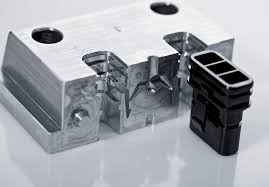In the cutthroat world of manufacturing, finding methods to reduce expenses and boost productivity is essential. Rapid tooling is one cutting-edge solution that has become very popular. There are several benefits to this technology, especially in terms of time and cost savings. Here, we explore five crucial ways that rapid tooling in China accomplishes these economic advantages.

Speeding Up the Production Process
The traditional method can take weeks or even months to produce the required molds and tools. Rapid tooling, on the other hand, frequently makes these parts in a matter of days. This speed is made possible by sophisticated manufacturing processes like computer-aided design (CAD) and 3D printing, which enable the rapid and accurate manufacture of tooling parts. You can gain a competitive advantage by expediting the production process and products to market more quickly.
Reducing Prototyping Costs
Although prototyping is a crucial stage in the creation of new products, it may be expensive and time-consuming. However, rapid tooling allows for the manufacturing of high-quality prototypes at a fraction of the cost, resulting in reduced cost.
It makes it possible to generate numerous iterations rapidly and economically by using automated manufacturing techniques and cost-effective materials. This makes it possible to conduct more testing and improvement, which results in better end goods without going over budget.
Minimizing Material Waste
As subtractive operations like milling and machining produce large amounts of waste material, traditional manufacturing methods can lead to severe material waste. On the other side, additive manufacturing methods—which create components layer by layer with little waste—are the cornerstone of rapid tooling. In addition to reducing production costs, this economical use of materials is consistent with sustainable manufacturing techniques. You can save money on raw materials and aid in environmental conservation by cutting waste.
Enhancing Product Customization
Customizing a product using traditional tooling techniques frequently necessitates making brand-new molds or tools, which can be costly and time-consuming. However, rapid tooling can readily adapt to needs for customization and changes in design at a low additional expense. This feature is especially helpful for businesses like aerospace and medical devices that need to produce unique products or small batches of goods. These improved personalization possibilities can create new business prospects and boost consumer satisfaction.
Lowering Labor Costs
The necessity for manual labor is greatly reduced by the automation and accuracy of rapid tooling. The various stages involved in traditional tooling methods—from designing and machining to assembling and finishing—require specialized manpower. However, with the use of sophisticated software and automated equipment, rapid tooling in China expedites these procedures and reduces the need for human intervention. Reduced labor expenses result in substantial savings for manufacturers, which they can then spend on marketing, R&D, or other areas of business.
Rapid tooling is transforming the industrial sector by providing an affordable, cost and time-saving alternative. It is an essential component of cost-effective production techniques, and as technology advances, we may anticipate even higher efficiency and cost savings in the tooling and molding processes.
















